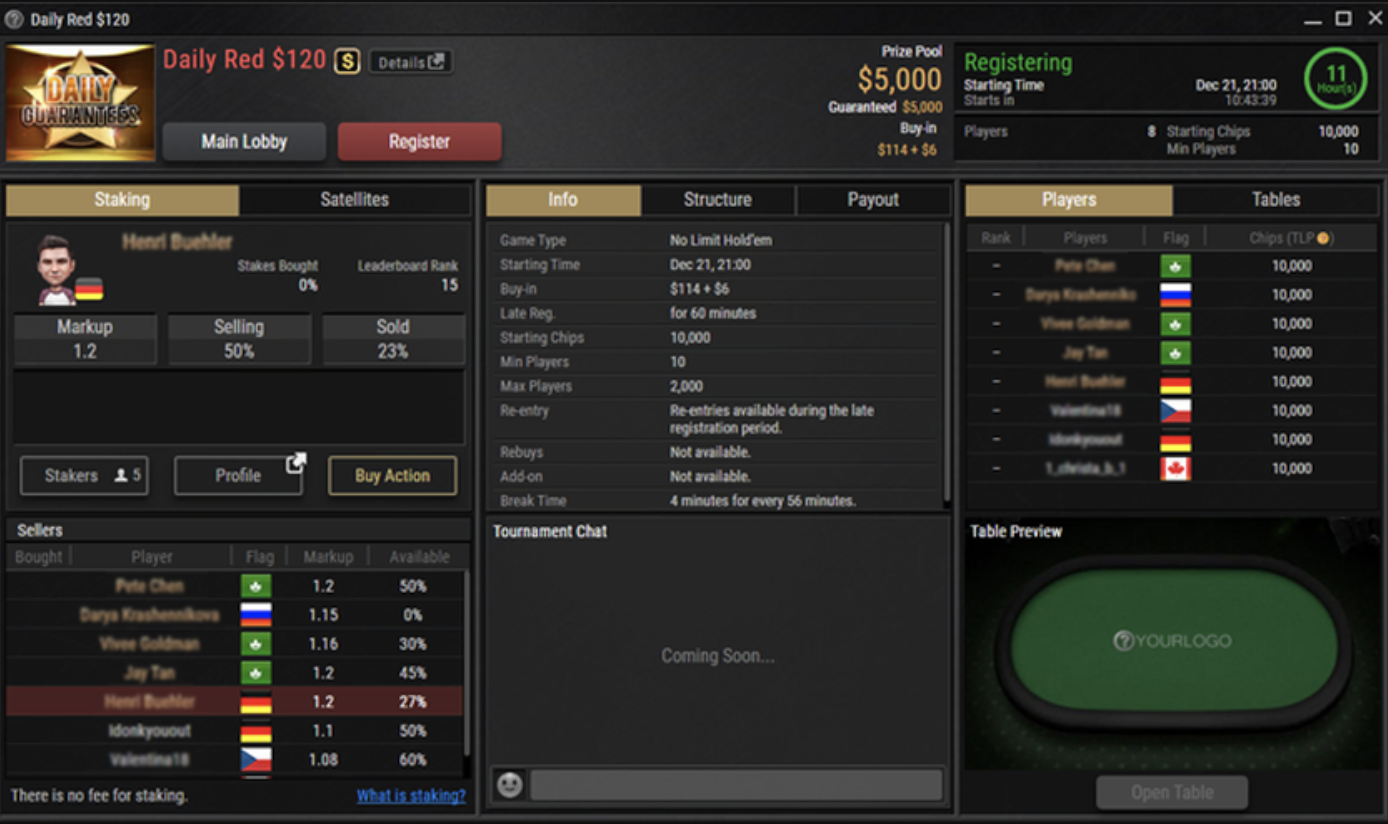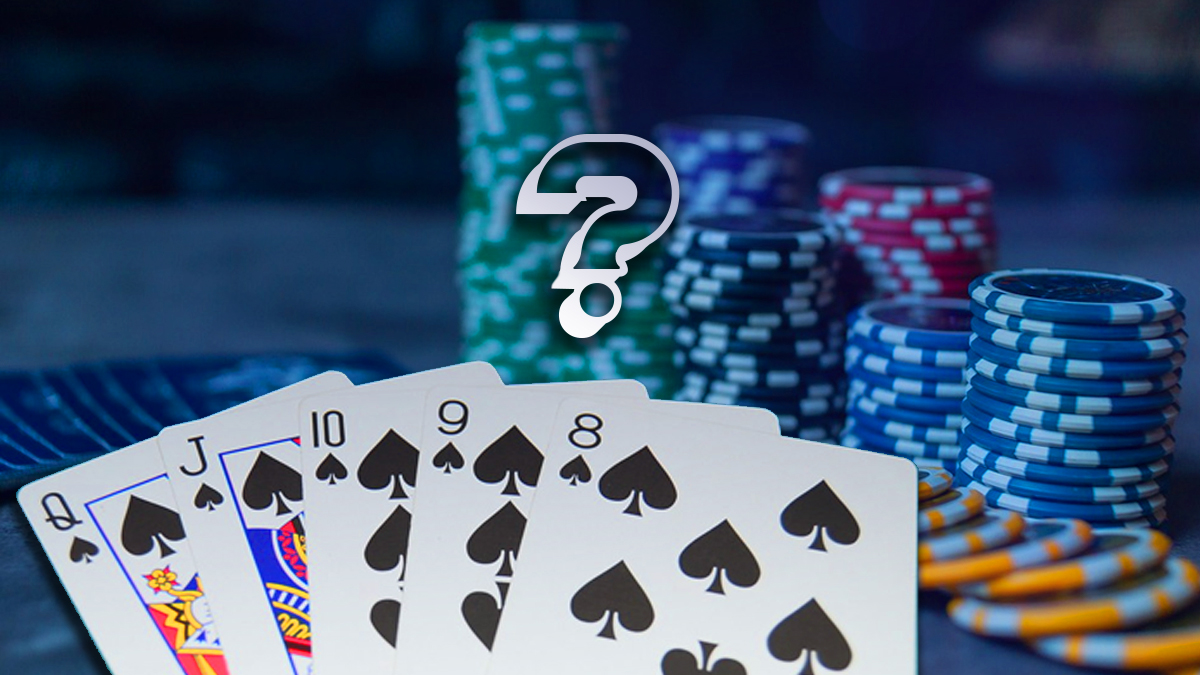Poker Winnings Split
Posted By admin On 11/04/22- Poker Winnings Split Game
- Poker Winnings Spreadsheet
- Poker Tournament Winnings Split
- Poker Winnings Split Lines
A reader in Texas asks advice this week about financially backing another player, and a reader in Iowa wants to know if her reaction to women wearing revealing clothing at the table is old-fashioned.
Q: A lady in our group has someone wanting to back her in some tournaments. He wants her to provide some numbers. What are the customary splits? — Cecil O. in Kaufman, Texas.
A: There are two typical ways I know to back players, Cecil.
In high-low split games where each player is dealt more than five cards, each player chooses five of his cards to play as his high hand, and/or five of his cards to play as his low hand. The sets may overlap: for example, in seven-card stud played high-low split, a player dealt 7-7-6-4-4-3-2 can play a high hand of 7-7-4-4-6 (two pair, sevens. $ 3,000 Pot-Limit Omaha Hi-low Split-8 or Better (Event #31) 46th World Series of Poker - WSOP 2015, Las Vegas 6th $ 52,324 30-Jun-2014: United States $ 3,000 Omaha Hi/Lo (Event #59) 45th World Series of Poker - WSOP 2014, Las Vegas 37th $ 5,888 24-Jun-2014: United States. In the unusual circumstance that two players hold the identical five cards, the pot would be split. Visit our Poker Cash Game Rules page to know our other rules of Poker Cash Games or visit our Poker Tournament Rules page to know all the rules related to the current poker tournaments running.
One is that the backer pays all buy-ins and entry fees to put the player in action. If the player loses, the loss is entirely the backer's. If the player wins, the backer's investment is paid back off the top and the two split what's left.
The exact breakdown of the split depends on the caliber and past performance of the player. A player with a great track record, or at least terrific potential, probably would get 50 percent. A less proven player might get a smaller percentage, at least until her results showed she deserved an equal share.
In addition, they should agree in advance about dealer tips and other expenses — are they shared, too?
The second way is for a player to sell 'pieces of the action.' Typically, this kind of backing happens tournament-to-tournament.
For example, for a $1,000 event a player might sell half of her action to five people for $100 apiece. If the player cashes, she takes her own $500 buy-in money (plus entry fee) off the top, returns each of the $100 investments, then divides the winnings so that she gets half and each backer gets 10 percent.
You also asked if having a financial arrangement with a backer should affect the player's strategy.
I'd say no, Cecil. Generally, the person should just play his or her 'A' game in every event and see what happens. But there are other factors to consider.
For instance, the player and backer should agree in advance on bubble-play strategy. Some players don't worry about squeaking into the money — they're trying to win first place and are willing to risk being knocked out just short of cashing. Others play conservatively to make sure they cash first, then go for the big bucks.
I also think some sponsored players might alter their game, at least initially. Some newly backed players might suddenly feel free to play aggressively for bigger scores, while others could feel added responsibility from playing on someone else's money and take fewer risks with steadier play.
Finally, you wanted to know: 'What if you were playing in a tournament and found out an opponent was playing on someone else's money? Do you incorporate this into how you play?'
No, I don't factor that into my playing style at all. I'm sure I've played against many backed players over the years, but rarely did I know when an opponent had a financial sponsor.
Now, if you knew 'Player A' was being backed and always played a certain way because of it, then yes, you could consider that in specific situations and play accordingly. However, that can be a lot of information to process in the heat of battle.
A simpler choice is to base your decisions on how each opponent is playing THAT DAY, knowing that playing styles can change from day to day and game to game.
Q: Hey, Russ, I record 'Poker After Dark' each night and watch it the next day. After the recent episode featuring the amateur, I must say I would have more respect for Jennifer Tilly if she would show a little more modesty. Or am I just being old-fashioned? — Betty B. in Davenport, Iowa.
A: Interesting you say that about Tilly! I know it's television and she's an actress, but I think between her low-cut top and her table talk, she had amateur Arnold Thimons — seated right next to her — way off his game. He sure seemed to have a good time, though!
I don't like it when a female opponent tosses her attributes virtually into my face at the table. As a guy, yes, I love it! But as a player, not so much. The thing is, all poker players use whatever weapons they have to gain an edge. Nothing will ever change that.
By the way, being old-fashioned isn't a bad thing, you know. I'm there with ya.
E-mail your poker questions and comments to [email protected] for use in future columns. To find out more about Russ Scott and read previous LuckyDog Poker columns, visit www.creators.com or www.luckydogpoker.com.

It may come as a surprise to you, but a large number of tournament poker players – the pros that you see every week on television, not the amateurs who take a flyer on an occasional big buy-in event – are staked. They are playing poker on other people’s money, and as a result stand to win only a percentage of what it appears they have won when they make a big score.
Why do they do this? Aren’t these big name pros good enough at poker to make it on their own? The reasons are myriad. But the variance in tournament poker is huge – much bigger than in cash games, and even a good poker player who is probably a winner in the long run can go a very long time without cashing high enough up on the pay ladder to show a profit.
Not only are the swings big in tournament poker, the costs associated with playing are high too. After all, when you play big tournaments in brick-and-mortar casinos, you have to play them where they are, which often means plane fare from your home to the tournament as well as the cost of in a hotel for however long you plan to be there. For someone flying from Europe to Las Vegas to compete in the World Series of Poker, it means factoring in the cost of a hotel, meals, and getting around town in addition to entry fees.
While the top echelon poker players usually don’t have to be staked – Doyle Brunson and Phil Ivey, for example, can play on their own money – the tournament players slightly below them really need to minimize the risks of going broke. It’s also important to realize that Ivey and Brunson are marvelous cash game players who win millions each year in the day-to-day grind of high stake, cash game poker. But many otherwise good tournament players are lifelong losers in cash games, and do not have the ability to build their tournament bankroll this way. To make a living they have to beat tournaments and avoid cash games.
Being staked is the answer. Other players who have the cash at the time stake players, or others stake them – non-poker playing investors who see a chance to make a score by backing a winning tournament player.
Amateurs who take a piece of someone on a one-time only basis stake some players. You can invest $500 or $1,000 to help your favorite pro buy into a $10,000 buy-in poker tournament and share in the rewards when he cashes in the event. Guys who invested in Greg Raymer when he won the World Series of Poker’s main event a few years ago must have felt very happy indeed when he won and his investors collectively reaped a small fortune as a result.

Erik Seidel and John Juanda staked Mike Matusow to a million-dollar payday at the WSOP’s main event. Erick Lindgren backed Josh Arieh when he won $2.5 million for third place in the 2004. Billy Baxter invested in the late Stu Ungar during the 1997 WSOP championship, which Ungar won handily.
But being staked usually means one of two things. You are on a makeup deal, or you’re not. When you’ve struck a makeup deal with a backer, you agree to repay him the costs of entry and fees from tournaments where you’ve failed to cash before winning any money for yourself. The basic staking deal calls for a backer to pay another player’s buy-ins and entry fees, then split the winnings only after buy-ins and entry fees are recouped.
Staked players who don’t cash for four, five, maybe 10 major events can owe their backer $100,000 or more because buy-ins and entry fees get taken off the top before the winnings are split. When a poker player is in the hole for that kind of money, even if he wins an event he may not see much of a payday. So there’s a tendency for players who are on makeup with one backer to terminate that relationship as soon as their agreement is up and find a new backer, where the books are balanced at the outset.
The other kind of arrangement does not involve makeup. Each tournament stands alone, and if the player doesn’t cash in three straight events, but wins $50,000 in the fourth event he plays, he would win his share of the $50,000 and not have to worry about paying makeup to a backer.
On first glance it seems like makeup is a better deal for the backer. But maybe not. There is a tendency for the staked player to bolt whenever he is on makeup and in too deep of a hole. Then the backer has no chance of getting back his investment, the player is out on the street, broke or close to it and looking for another backer where he can start at ground zero all over again.

In a deal without makeup, the backer can take a higher percentage of the money his player wins to account for his added investment. In other words, a backer could offer a player a makeup deal where he is playing for 50 percent of himself, or a deal without makeup but the player keeps only 30 percent of his winnings. The backer assumes all the risk related to entry fees, but will come away with more money if his stake horse is a winner.
Backing deals that do not involve makeup also tend to last longer, because the player always starts from square one in each tournament, and doesn’t have to climb out of a hole to pay makeup before winning any money for himself.
Playing on other people’s money also keeps the staked player free from worry during the tournament itself. When facing a big bet with a strong suspicion that an opponent is bluffing, it’s easier to make that call when there are no worries about surviving in this tournament to win enough to play in the next one. When playing on their own limited bankroll, players may tend to fold that hand because mere survival often becomes more compelling than a desire to win.
Rather than having a single investor stake him for one tournament and risk losing that entire stake, some players develop an investment portfolio of sorts. They might map out ten or 20 events, figure the cost to enter all of them, then sell shares to investors or other players. This method hedges against bad runs and short-term variance. The drawback is a lot of bookkeeping and communicating with backers. But for a winning poker player, this might be the best staking method, since it doesn’t involve digging one’s self into the makeup hole, nor does it run the risk of burning up a backer due to a short term run of bad cards. This method also avoids giving a single backer a sense of ownership over the player.
But is staking ethical, or is it a potential conflict of interest that threatens the public’s fascination with big buy-in tournament poker if one player backs another? Whenever another who is also playing the same tournament backs a player, the appearance of a conflict of interest can raise its ugly head.
Suppose an investor and his horse wind up at the same poker table, or perhaps two players backed by the same investor are squaring off against one another? Will one player dump chips off to another for the investor’s benefit? While it’s possible, the penalties for this type of collusion, including a lifetime expulsion from tournament poker events, serve as deterrents.
Nevertheless, the appearance of collusion can be as damaging as collusion itself. While poker has experienced incredibly rapid growth worldwide, it hasn’t consolidated those gains to the point where it can survive a big collusion scandal. Tournament directors have the added job of ensuring that their events are clean, and that includes a game free of players influenced or directed by financial backers.
If you’re looking for a stake, don’t expect it to be easy. First, you’ve got to be a winning player, otherwise why would anyone take a flyer on you? In addition, most investors want to have some sort of relationship with you. This is a character and trust issue. If you cannot be trusted, if your character is called into question, backers won’t touch you. Backing can also provide a measure of prestige. If you were to be backed by Phil Ivey, it conveys a large amount of status and prestige.
Poker Winnings Split Game
If you’re exclusively an online poker player then backing is a tougher nut to crack. Building relationships is more difficult online and there’s little real chance to get to know players who are, for the most part, merely screen names to their playing peers. It’s tough to assess someone’s character and trustworthiness unless you interact with them in person.
Nevertheless, players who meet others in live poker games and brick-and-mortar tournaments can easily build relationships that extend over into the virtual world. If you develop a relationship with a backer or a group of them, there’s no reason why you can’t be backed for online poker tournaments too. One of the added benefits of online backing arrangements, is that your backer can always watch and assess the quality of your play, regardless of whether you cash in a given event or not. If you play well, your backer will know it. If you win money but play poorly, your backer will know that too, and he may well want to get out while the getting is good.
The bottom line is that being staked offers skilled players who do not have a big bankroll an opportunity to play in events they otherwise couldn’t afford, and maybe a chance to earn more money than they could if they played on their own dime in smaller events. The drawback is that you don’t keep all of what you win. It’s entirely a case of circumstances, and this is a decision you’ll ultimately have to make on your own.
Related Articles
By Lou Krieger
The author of many best-selling poker books, including “Hold’em Excellence” and “Poker for Dummies”. A true ambassador of the game and one of poker’s greatest ever teachers.
Poker Winnings Spreadsheet
That reminds me, Lou, ah, there’s a question I’ve been meaning to ask you…
I’d never be backed, I prefer to keep all my profits. Of course, I’m not sure anyone would want to stake me to begin with so the point is moot.
Lou, two things:
1. Do you really think there are many winning tourney players who lose at cash games? Perhaps, those “winning tourney players” are really losing tourney players who experienced a temporary friendly side of variance during a few tournies.2. How can you possibly argue that any tourney player can overcome high variance in the long run when you also have to factor in the tourney fees and expenses that keep adding up along way combined with the coin-flip nature of the vast majority of confrontations. You see…it’s perfectly demonstratable that a high variance is a result of a very small edge any player can have against another(as a result of the coinflipping). So, if anyone has a very small edge, how can they expect to cover the fees which are always 10% or larger? It can’t be done. Sure…there are some people who have an unfair variance for a while, some of have temporary pscyhological advantage of a recent win, but long term there are only those who get sponsorships. Selling stakes is merely good for the house as it keeps a maximum number of addicts in action while they continue to fee off their roll to the house.
Poker Tournament Winnings Split

Leave a Reply
Poker Winnings Split Lines
You must be logged in to post a comment.